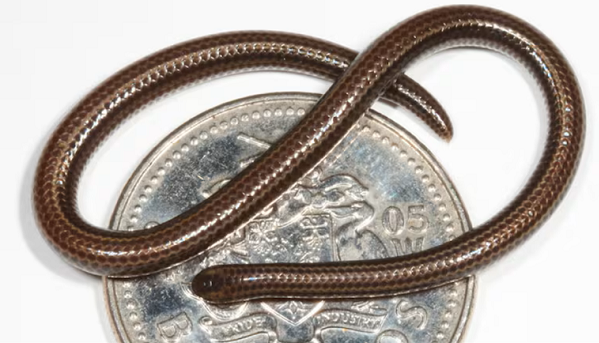
The full title of this article is “Scientists find the world’s smallest snake, once feared extinct, hanging out under a rock.” Sheena Goodyear, reporting for CBC Radio CBC Radio (Canada), says, “The Barbados threadsnake, last seen decades ago, is native to the country’s mostly razed forests.”
Until this spring, the world’s smallest species of snake was considered lost to science, and quite possibly extinct — until Connor Blades and his colleague found one under a small rock in a forest in Barbados.
“I was very excited,” Blades, an ecologist with the Ministry of Environment in Barbados, told As It Happens guest host Megan Williams. “It hasn’t been seen in basically two decades, so it was quite an exciting find, to say the least. Probably one of the highlights of my career so far.”
The re-discovery of the Barbados threadsnake is a positive sign for his country’s biodiversity, Blades says. Since the Caribbean island was first colonized by Europeans in the 16th century, 98 per cent of its natural forests have been destroyed, and with them, much of its native wildlife.
Thousands of ‘lost’ species
At roughly 10 centimetres in length and two millimetres in width, the Barbados threadsnake is small enough to fit neatly coiled on a coin.
At first glance, you could be forgiven for thinking it’s a worm. And, in fact, it’s also known as a wormsnake, but most earthworms are actually much bigger, says Blades. It’s endemic to Barbados, which means the island is its only home. It’s blind and is believed to feast mainly on termites and termite eggs. “Obviously, the smaller you are, the fewer things you can eat,” Blades said. “You don’t have a very big mouth.”
It’s also one of several species re-discovered in recent years with the help of Re:wild, a non-profit that partners with governments, universities and conservation groups to find and protect some 4,800 species it considers “lost to science.”
“Rediscovering one of our endemics on many levels is significant,” said Justin Springer, Caribbean program officer for Re:wild, who helped rediscover the snake along with Blades. “It reminds us that we still have something important left that plays an important role in our ecosystem.” [. . .]
For full article or to listen to the full report, go to https://www.cbc.ca/radio/asithappens/worlds-smallest-snake-1.7592176
[Photo above by S. Blair Hedges.]
